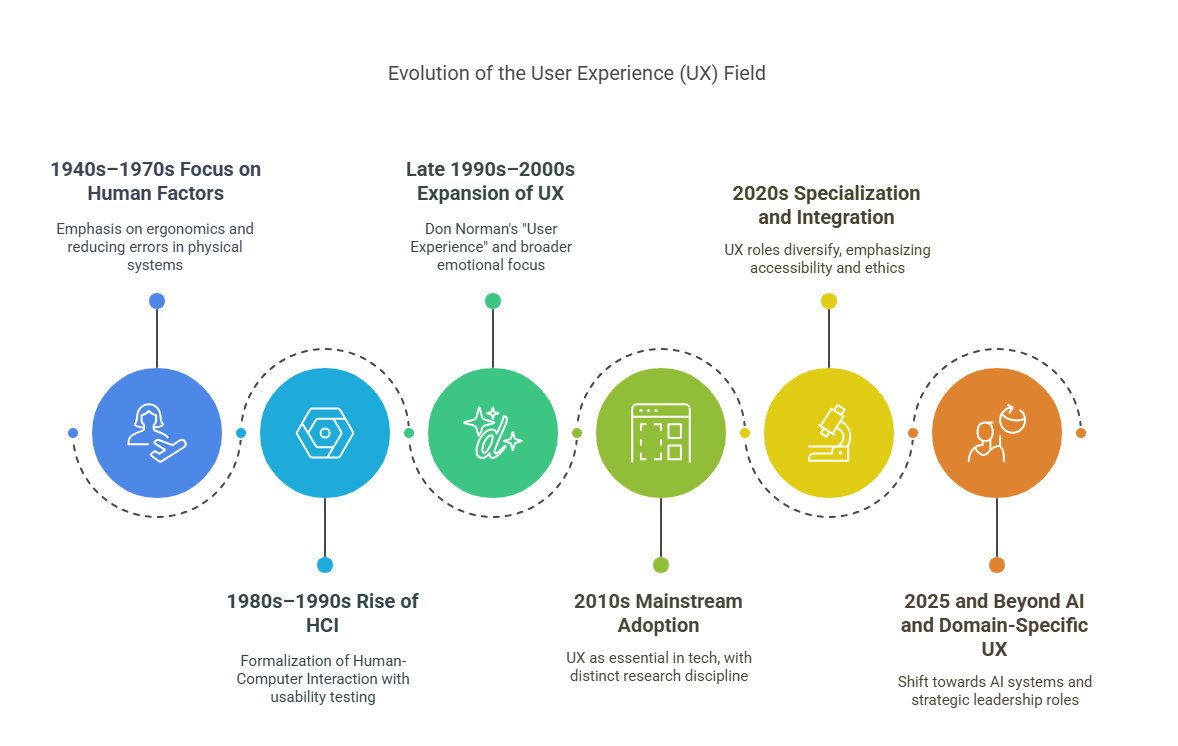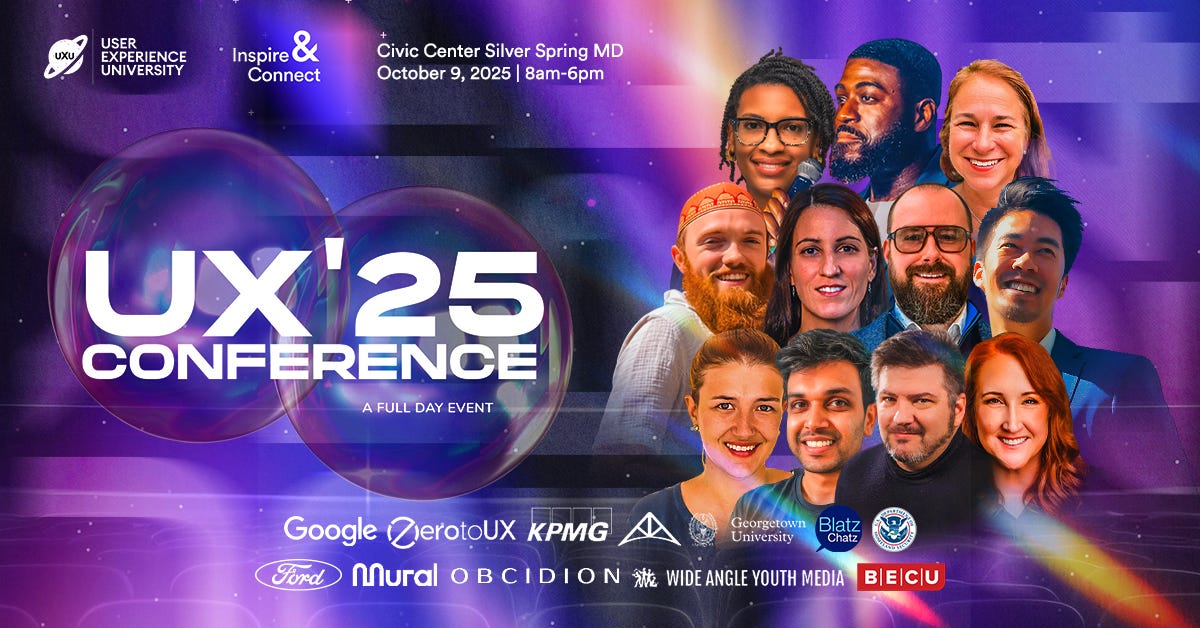📍 From Cockpits to AI: How UX Grew Up—And Where It's Headed
A brief history of UX, and what it tells us about the future.
Every field has an origin story.
Ours? It started in the 1940s, not in tech labs, but in military cockpits. Human errors were costing lives, and engineers began designing with one goal: help humans interact better with machines.
That moment sparked what we now call User Experience.
From there, UX travelled an incredible path—shifting from analog to digital, from physical systems to complex software, from usability to strategy. Let’s zoom out for a moment and reflect on how far we've come:
🌱 1940s–1970s: The Pre-UX Era
Focus: Human Factors, Ergonomics, and Physical System Design
Long before Figma and user flows, design thinking lived in cockpits. During World War II, engineers began applying human factors engineering to reduce pilot errors. This era laid the foundation for designing systems around human limitations, not the other way around.
The first UX question wasn’t “Is it intuitive?”
It was “Will someone die if this is confusing?”
🧠 Read: Paul Fitts & Alphonse Chapanis on human-machine interaction
🖥️ 1980s–1990s: The HCI & Usability Era
Focus: Human-Computer Interaction (HCI), Usability Testing
As personal computers entered homes and offices, the need for “usable” software exploded and so did the challenge of interacting with digital systems, bringing Human-Computer Interaction (HCI) to the forefront
Researchers like Ben Shneiderman, Jakob Nielsen, and Stuart Card introduced methods such as heuristic evaluation and GOMS modeling to improve software usability.
Usability became a formal area of study in academia and industry.
Formal usability labs were established in companies like IBM, Microsoft, and Bell Labs.
We moved from physical tools to digital interfaces—but kept the same user-first mindset.
🔁 Late 1990s–2000s: The Birth of “User Experience”
Focus: Emotion, Context, Brand, Flow
Here comes Don Norman, then at Apple, who famously coined the term User Experience to describe something broader than usability. UX came to include emotion, delight, flow, and brand trust—the whole journey, not just the interaction.
Designers began crafting personas, wireframes, information architecture, and mapping entire ecosystems.
“Make it work” evolved into “Make it meaningful.”
📘 Read: Don Norman’s “The Design of Everyday Things”
📱 2010s: UX Matures as a Practice
Focus: Formalization, Research, and Design at Scale
The iPhone era made good UX a competitive advantage and essential to product success.
UX researchers and designers became core members of product teams.
Design systems, research repositories, and cross-functional collaboration took center stage.
Bootcamps and career switchers surged. UX was no longer niche.
Design wasn’t just visual anymore—it was systemic, scalable, and tied to business outcomes.
🔍 2020s: UX Specializes and Integrates
Focus: Cross-Disciplinary Work, Ops, Impact
Today, UX is a multi-specialty ecosystem:
UX Researchers
Content Designers
Accessibility Specialists
DesignOps & ResearchOps
UX Strategists
UX is increasingly embedded in data, product, engineering, and business. Democratized research is growing. And we’re finally asking: How do we measure our work’s impact—beyond usability scores?
The best teams aren’t just building right—they’re asking if they’re building the right thing.
🚀 2025 and Beyond: The Future of UX
Focus: AI, Outcomes, Domain Expertise, and Leadership
UX is stepping into the AI era, designing for models that learn, evolve, and personalize.
We’re shifting from usability testing to prompt testing, trust calibration, and AI explainability.
Roles will deepen: expect more domain-specific UX roles (e.g., Health UX, FinTech UX, AI UX).
UXers will need to speak the language of business, outcomes, and experimentation.
UX lesson: We’re not just designing interfaces—we’re shaping the human experience of emerging technologies.
So Where Do We Go From Here?
That’s the question at the heart of UXCON '25
This year, we’re bringing together UX professionals, thinkers, builders, and strategists from around the world to ask—and answer—the big questions:
What does UX leadership look like in an AI-powered world?
How do we measure the value of our work when it’s no longer visible on a screen?
What roles will define UX in the next decade?
Whether you’re early in your career or leading a team, UXCON '25 is where we sketch the next chapter of this story—together.
We’re offering a two-ticket bundle to make it easier (and more fun) to attend with a friend, teammate, or fellow UXer. Bring someone with you and share the experience—



